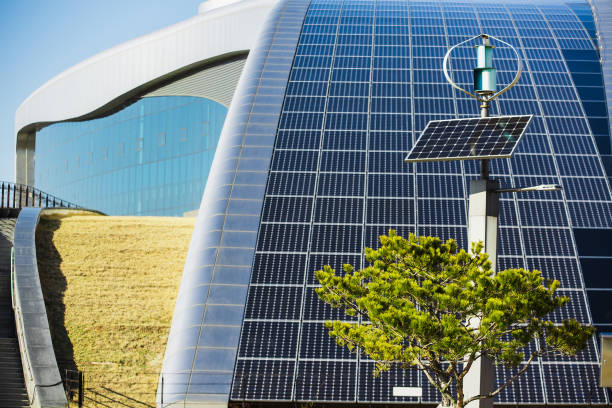
Many people are now motivated to find cleaner and cheaper ways to produce energy due to the growing concern about climate change and rising greenhouse gas emissions. The attraction of solar energy to be used on Earth has led to a boom in developing and purchasing this method over the last few years. Electrical engineers at the University of California San Diego have developed a new form of solar energy harvesting called “nano trees.”
You can make a nano tree by placing a nanowire of silicon in a zinc liquid solution. The wire is exposed to a chemical reaction that produces zinc oxide branches. As their name suggests, nano trees can be tiny. Approximately 10,000 nano trees would fit in the cross-section of a hair. Over a million nano trees are needed to form a one-square-centimeter photoelectrochemical cell, which is then placed in another solution and exposed to sunlight.
A nano tree’s vertical structure makes it more efficient at gathering solar energy than other trees. The nano tree’s 3D-branched nanowires allow it to absorb more light and split water molecules. The structure provides for smaller hydrogen bubbles and their absorption, which can lead to a higher hydrogen absorption rate. Nanotrees are 3D, which means the surface area available for chemical reactions is increased by at least 4000%.
The nano tree is a remarkable advancement in solar energy collection technology but has yet to fully develop. The nature of hydrogen is a challenge for nano trees, which means that their efficiency is only around three percent. The developers plan to create a cell with a cathode-anode split to convert hydrogen gas more efficiently and use it for clean energy. The developers are also trying to solve stability issues from zinc oxide’s tendency to rust.
The UCSD team has set a higher goal than tackling these problems. They aim to create a nano tree that can mimic artificial photosynthesis. These engineers would then have a construct that mimics photosynthesis and can capture carbon dioxide in the atmosphere. This will reduce greenhouse gas emissions while producing energy. The engineers are hopeful that, even though this nano tree’s function is not yet complete, they will eventually be able to create one.
All those who want to use cleaner and cheaper energy should celebrate the progress made by the nano tree.
In a few decades, we may be able to switch entirely from oil and gas to solar energy created by nano trees. Scientists and engineers must find more efficient methods of splitting water molecules and harvesting hydrogen, but with the nano tree, progress seems imminent.
